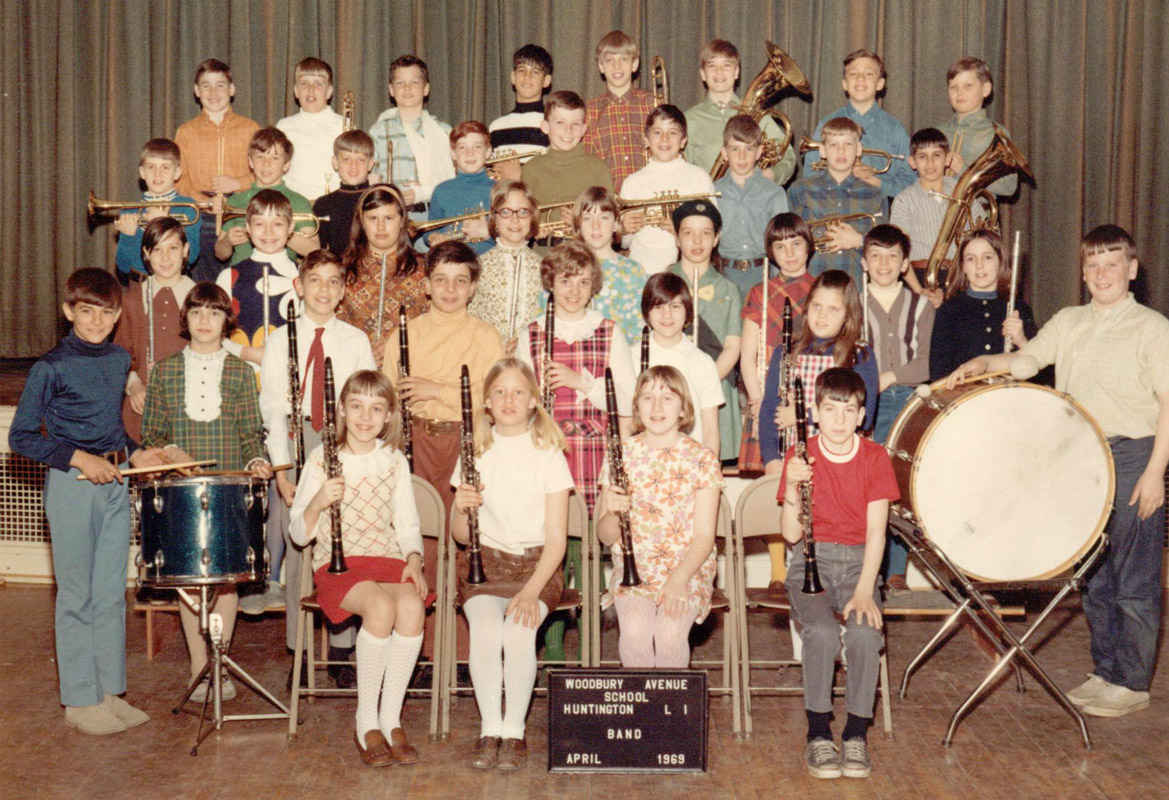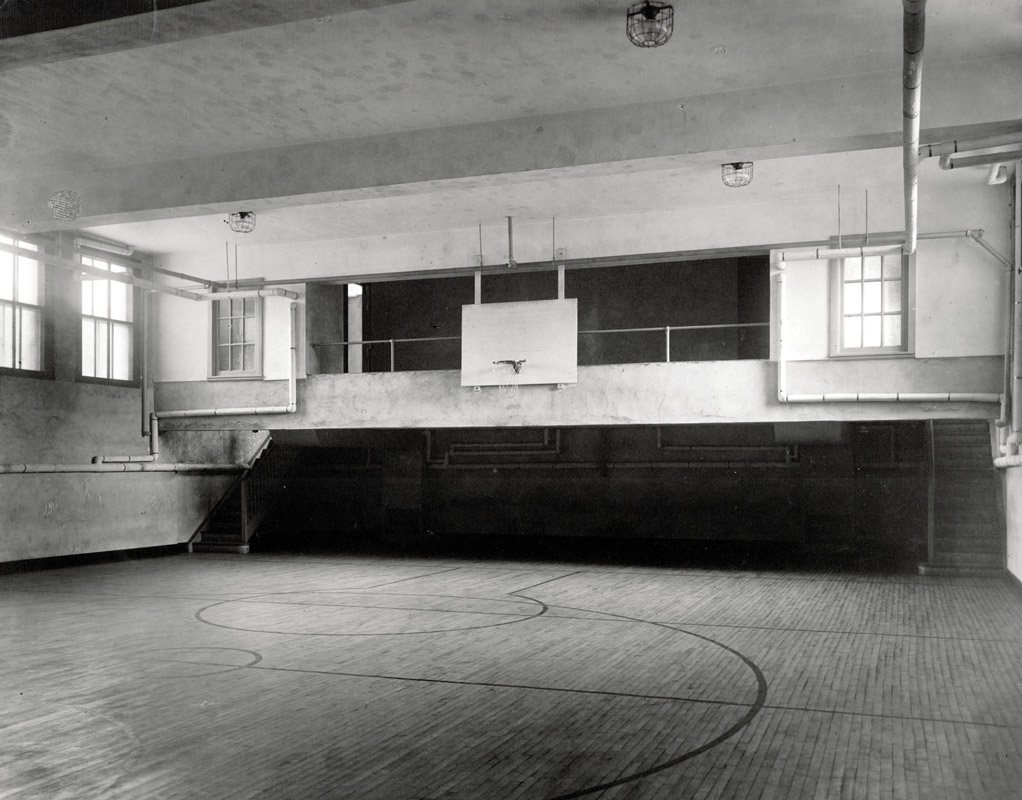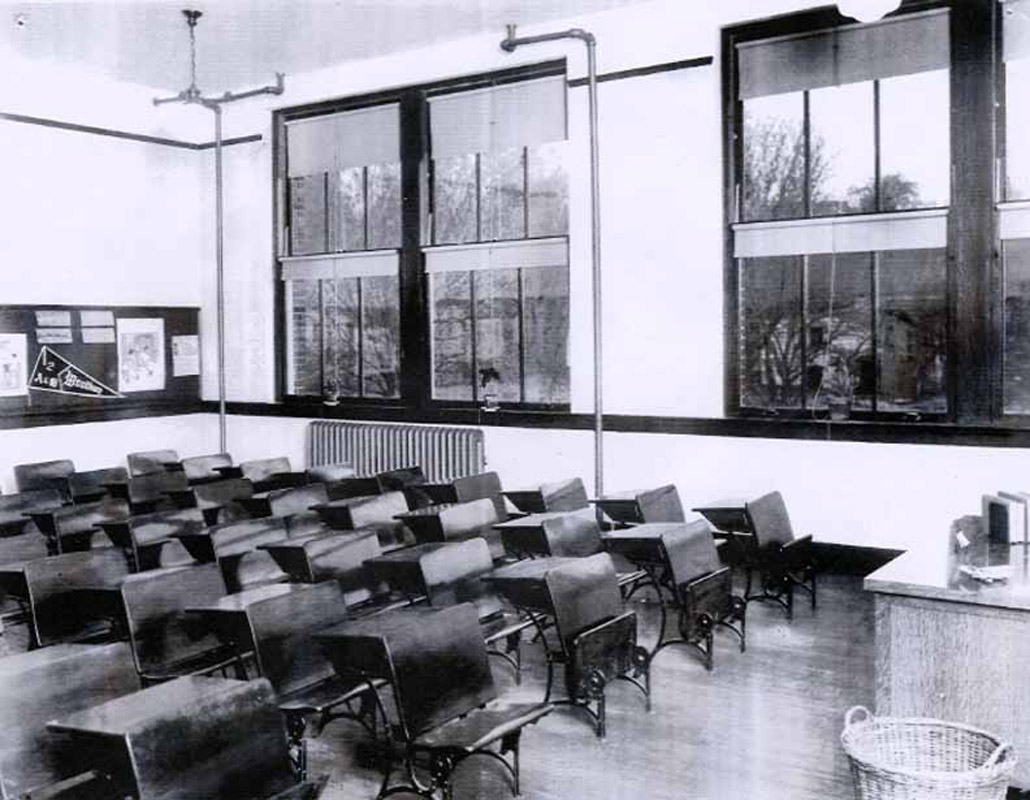Woodbury Avenue School closed more than 47 years ago and was completely demolished in February 1988, but the old building will probably never be forgotten, having been immortalized by its alumni through a website.
The alumni internet presence (www.woodburyavenue.org), allows for continuing testimonials and testifies to the fervent desire to preserve as much of Woodbury School’s history as possible.
Huntington was a growing community in the 1920’s and big families needed schools for their children. The district’s school buildings, including the Main Street School, which still stands today as the smaller of two structures comprising the current Town Hall, were filling up fast. The community had long prided itself on providing a quality public education to its young people and wanted to expand program offerings.
Huntington School District voters authorized two new school buildings at a special meeting held on November 14, 1922. One building was slated for Huntington Village and the other for Huntington Station (which was later named Lincoln Elementary School and sited on 9th Avenue adjacent to St. Hugh of Lincoln Roman Catholic Church.)
L.M. Neckermann Co. of 103 Park Avenue, New York was the low bidder for the general construction contract to build Woodbury Avenue Grade School and the brick building went up over parts of 1923 and 1924. It cost $169,870 for basic construction. S.H Sweeney of Manhattan submitted a winning bid of $28,000 for heating and ventilation, Pierre Olsen of Huntington was awarded a $9,000 bid for plumbing and Casino Electric Co. of Manhattan was approved to provide $4,000 worth of electrical work.
Stately and Majestic Building
The stately and majestic architecture utilized by architects was common for that era and Woodbury Avenue Grade School, which was built on about three acres (the School Board later secured several small adjacent parcels adding a total of another half acre), featured an auditorium with folding chairs, a slightly sunken gymnasium, fireplaces in some kindergarten rooms and the general feeling that this was a building that could stand for a century or more. Simply put, it was built to last - forever.
As was typical for that era, teachers smoked in the boiler room. Evening volleyball and basketball activities for men were common. Woodbury’s coal bin held about 165 tons of nut coal and produced about 36 barrels of ash a week. When the bin was no longer needed, it was converted into a general storage area.
For decades, students either walked to school or were dropped off by their parents. There were no busses to transport the youngsters, nor was there a cafeteria program. Instead, the school offered students crackers and milk. Prior to construction, a small stream came down the hills located at the rear of the property and formed a pond where the school was eventually built. In photos taken during the years Woodbury was in operation, those hills looked as if they were constantly in a state of erosion.
Woodbury students and their parents enjoyed particularly close relationships with the school’s teachers and regular physical and social activities kept the group tight knit. Students came from as far as Lloyd Harbor and Centerport, but most lived in and around the village. The first PTA was organized by Mrs. Russell F. Sammis. The PTA helped establish the first library in the school. After the seventh and eighth grades departed for Robert K. Toaz Junior High School in 1939, Woodbury Avenue School enrolled about 350 students per year.
Alumni Still Love the School
Woodbury’s alumni held a dinner dance in August 2006 at the Huntington Hilton in Melville. Alumni, former faculty and staff from across the country attended the event and another gathering the next day at Bethpage State Park where the group enjoyed a picnic and softball game. Most of the group is still sad over the school’s demise.
After eight months of research, a 40 member citizen’s advisory committee held a public hearing on Thursday, January 28, 1971 at 8 p.m. in the J. Taylor Finley Junior High School cafeteria and unveiled its plan to redistribute the student population around the district and permanently close Woodbury Avenue School.
The School Board said the reorganization was necessary due to the phasing out of Lincoln and Finley elementary schools (Finley then housed some elementary students, too), which was planned when the community voted to build Huntington Elementary School on Lowndes Avenue.
Parents and alumni immediately mobilized, held a petition drive that netted 5,000 signatures, commenced a legal action and appealed to the state commissioner of education to try and force the School Board to hold a public referendum on the closing, all to no avail.
Leased to BOCES and then Sold
Eventually, the school was leased for several years to BOCES, which established the Huntington Learning Center for emotionally disturbed students. After BOCES vacated the premises in the mid-1970s, the Huntington School District sold the site to the Baptist Church for their use as a school, which they named the Huntington Christian School. The church later sold the property to developers who cleared the land and built a condominium complex that is almost entirely now hidden behind dense trees and shrubs from the sight of passing cars on Woodbury Road.
Huntington School Heritage Museum curator Jack Abrams raced over the site when the building was being demolished and secured the original 1923 cornerstone and the copper box that was located inside of it. The box contained an American flag, bible and 1923 newspaper filled with information about the new school. The artifacts now rest in the museum’s collection.
With Woodbury Avenue’s fate sealed by the School Board, former and current employees and students gathered as a group at the school for one last time on June 11, 1971 at 7:30 p.m. Former Woodbury principal J. Taylor Finley, who was then living in Toms River, New Jersey, sent a letter dated May 27 on behalf of himself and his wife. He wrote: “The closing of Woodbury Avenue School saddens Edith and I very much, too, because we had many interesting and happy years there.”
Yet, even though it is no longer standing, Woodbury’s memory survives. Few elementary schools, if any, have as devoted an alumni group as Woodbury’s.




